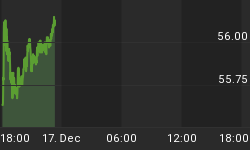Stagflation: When the general level of prices rises due to the purchasing power of currency-money falling, instead of price inflation due to a general increase in demand.
The credit cycle that normally drives advanced economies through boom and bust is turning out to be different this time round. The boom between the Lehman bust and the one yet to come never got going, because of very high levels of existing debt. This condition will almost certainly lead to stagflation.
Normally a prolonged period of low interest rates stimulates demand for bank credit to finance consumer demand. This time the signs are that a prolonged period of extremely low interest rates has failed to stimulate much more than asset prices. There are now signs that the global economy is stalling and there will be no boom, because consumers are already maxed out.
Therefore, it is hard to see how US interest rate policy can ever leave the zero bound. Unless something can be done to get the credit cycle back on track again, today's high asset values may not be sustainable, and falling asset values at times of exceptionally high debt can lead to widespread bankruptcies and a self-feeding slump. If the income earned by productive assets is not growing, something else will have to supplement it. At the very least this will involve an indefinite extension of very low interest rates beyond 2015. And every time asset values show signs of flagging, monetary intervention will be required.
In the US, asset inflation has been the Fed's objective since the Lehman crisis in 2008. However the exit plan was always to stimulate economic growth, allowing fiscal imbalances to reduce and interest rates to return to more normal levels. So signs that the US and global economies are now stalling raises the possibility that zero interest rate policy is going to be with us for many years yet. As long, that is, as price inflation remains subdued.
This is where monetary policy will come unstuck. The purchasing power of a currency can vary independently from economic demand, giving rise to stagflation. Technically this is inflation in a stagnant economy reflecting a change in preference against money in favour of goods. If the currency in question is the dollar, the reserve currency against which all others are benchmarked, the purchasing power of the whole currency complex can fall without any improvement in economic conditions.
Ultra-low interest rates, with no realistic possibility of rising to a proper market rate, will eventually undermine any currency's purchasing power. The authorities will be helpless, because to raise interest rates sufficiently to restore monetary confidence will almost certainly bring about the bankruptcies deferred since the Lehman crisis, potentially collapsing the west's entire financial system. The Volker response in 1980 of sharply higher interest rates to similar conditions then is not a policy option today.
In a nutshell, the conditions now exist for a decline in the purchasing power of all major currencies. If this happens it will result in prices of everything inexplicably rising; and if it becomes apparent to the general public that interest rates cannot be permitted to rise, stagflation will rapidly become impossible to control.















